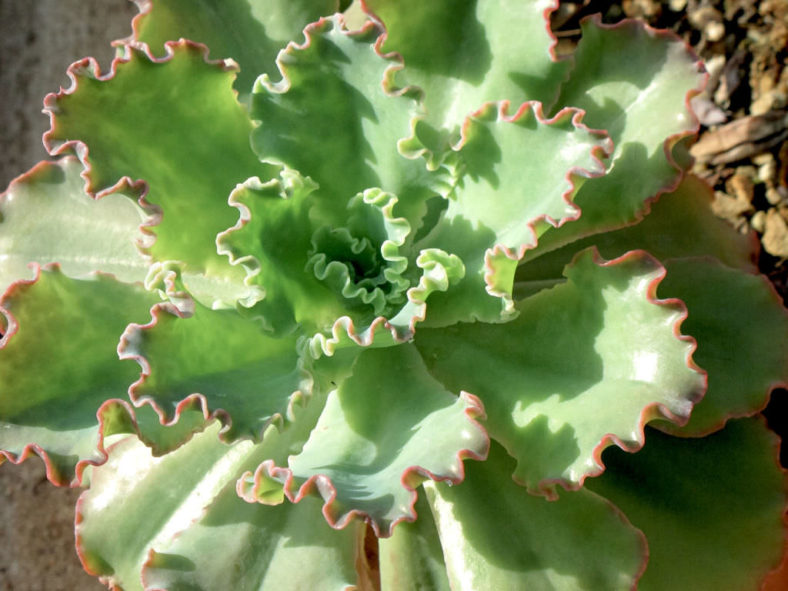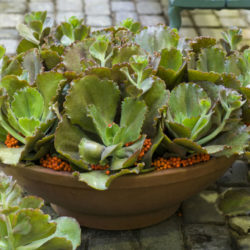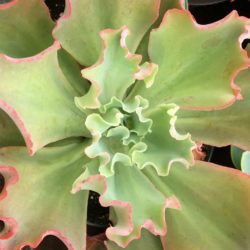Scientific Name
Echeveria crenulata Rose
Scientific Classification
Family: Crassulaceae
Subfamily: Sempervivoideae
Tribe: Sedeae
Genus: Echeveria
Description
Echeveria crenulata is a succulent plant that forms rosettes of soft green leaves adorned with crinkly, dark reddish to brown edges. The leaves are up to 4 inches (10 cm) long and up to 2.8 inches (7 cm) wide. Flowers are pinkish to yellowish, bell-shaped, up to 0.7 inches (1.8 cm) long, and appear on pinkish stalks that may reach up to 20 inches (50 cm) above the rosette.

Hardiness
USDA hardiness zone 9a to 10a: from 20 °F (−6.7 °C) to 35 °F (+1.7 °C).
How to Grow and Care
Most common Echeveria species are not complicated succulents to grow, provided you follow a few basic rules. First, be careful never to let water sit in the rosette as it can cause rot or fungal diseases that will kill the plant. Additionally, remove dead leaves from the bottom of the plant as it grows. These dead leaves provide a haven for pests, and Echeverias are susceptible to mealy bugs. As with all succulents, careful watering habits and plenty of light will help ensure success.
Repot as needed, preferably during the warm season. To repot a succulent, make sure the soil is dry before repotting, then gently remove the pot. Knock away the old soil from the roots, making sure to remove any rotted or dead roots in the process. Treat any cuts with a fungicide. Place the plant in its new pot and backfill with potting soil, spreading the roots out as you repot. Leave the plant dry for a week or so, then begin to water lightly to reduce the risk of root rot.
Most Echeveria can be easily propagated from leaf cuttings, although a few are better from seeds or stem cuttings. To propagate a leaf cutting, place the individual leaf in a succulent or cacti mix and cover the dish until the new plant sprouts.
See more at How to Grow and Care for Echeveria.
Origin
This species is native to Mexico.
Links
- Back to genus Echeveria
- Succupedia: Browse succulents by Scientific Name, Common Name, Genus, Family, USDA Hardiness Zone, Origin, or cacti by Genus


